Hurry Up and Wait
When the recession hit, artists James Tribble and Tracey Mancenido-Tribble took a different kind of road trip: They worked a full year as trained, professional truck drivers, hauling everything from J. Crew items to water bottles in their 18-wheeler.
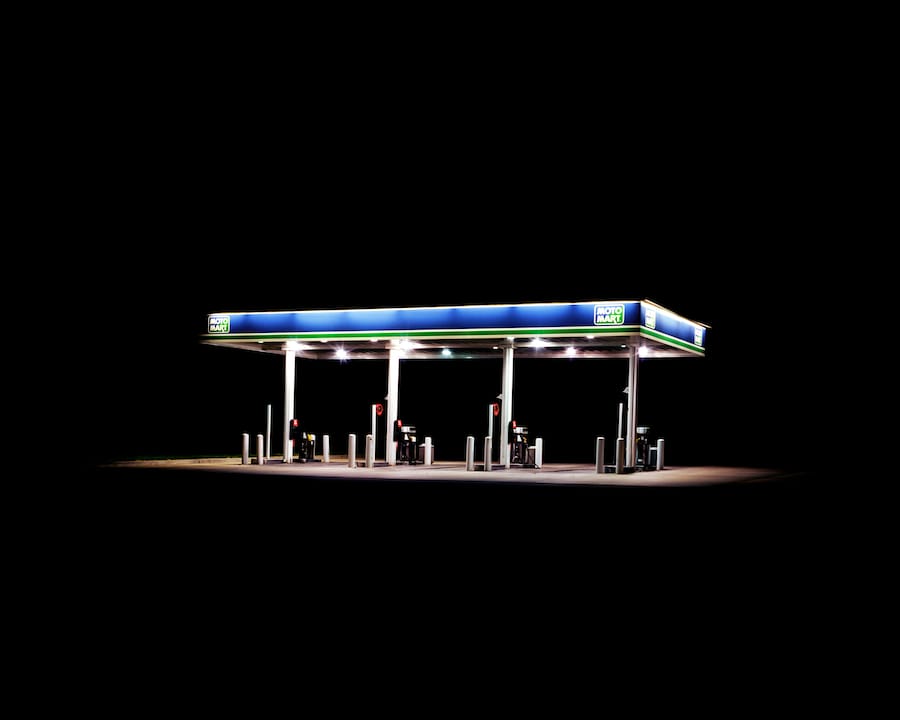
Interview by Nozlee Samadzadeh
Explain the year behind “Hurry Up and Wait.”
It couldn’t have been at a more inopportune time, and we had planned this project for almost a year before we even stepped foot into our own rig. Getting rid of our apartment, we packed up and trained for two weeks at a truck driving school, and found work very shortly after for one of the largest hauling companies here in the States. The recession was at its peak when we began, and while we hoped to at least break even, it didn’t work out that way regardless of our minimal cost of living. Loads were scarce, fuel was at a record high. Being new drivers, we were the lowest priority to a large-scale company. There were many drivers also new to the culture, from recent unemployment, and there were more drivers on the road than there were loads to be had. Continue reading ↓
“Hurry Up and Wait” will be on display at Sasha Wolf Gallery through Oct. 23, 2010. All images © copyright the artists, all rights reserved.
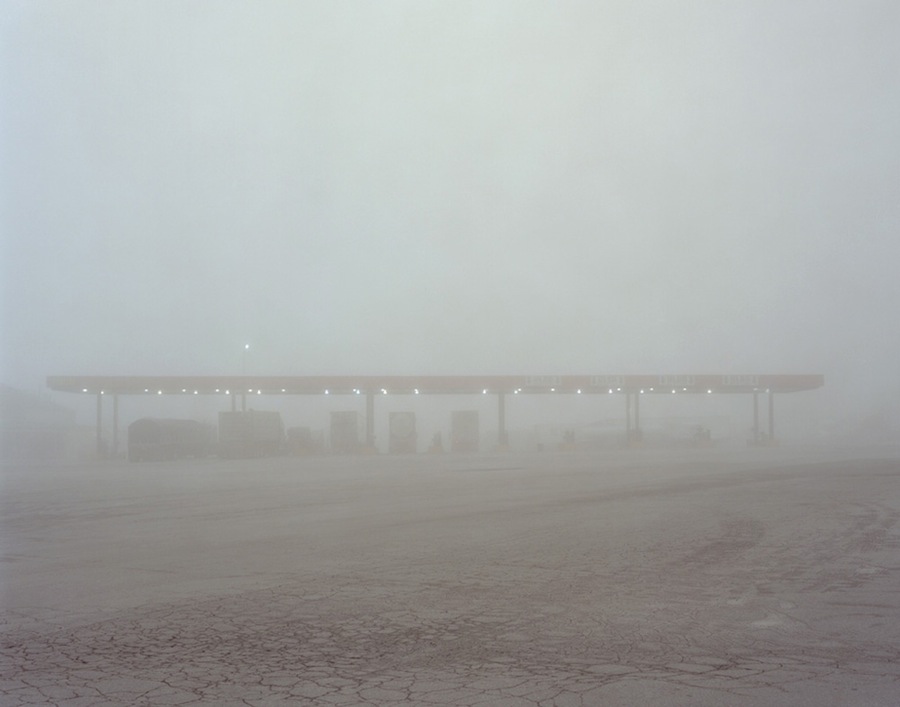
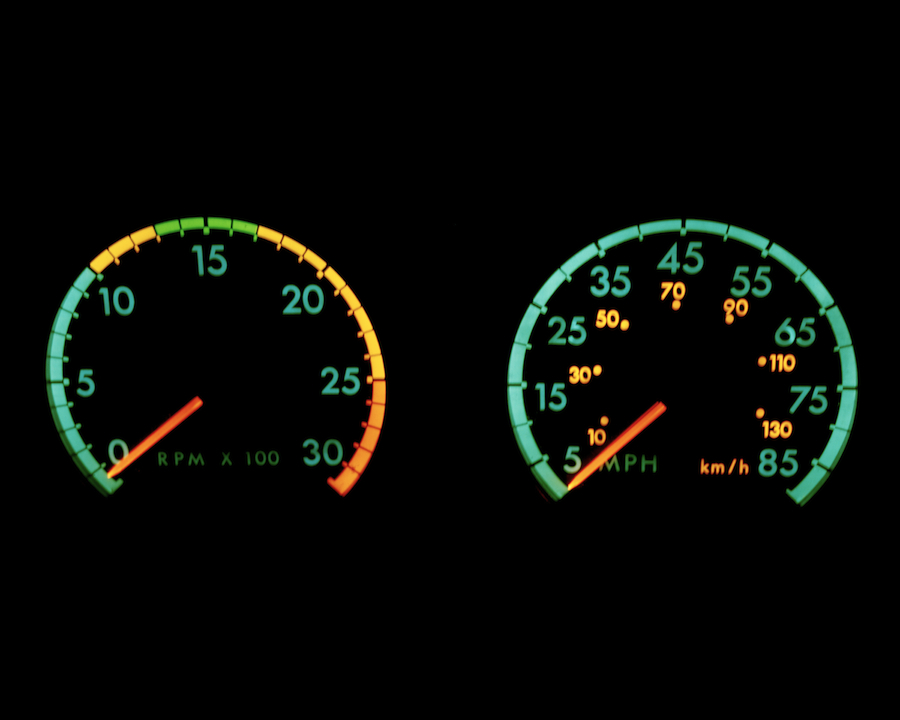

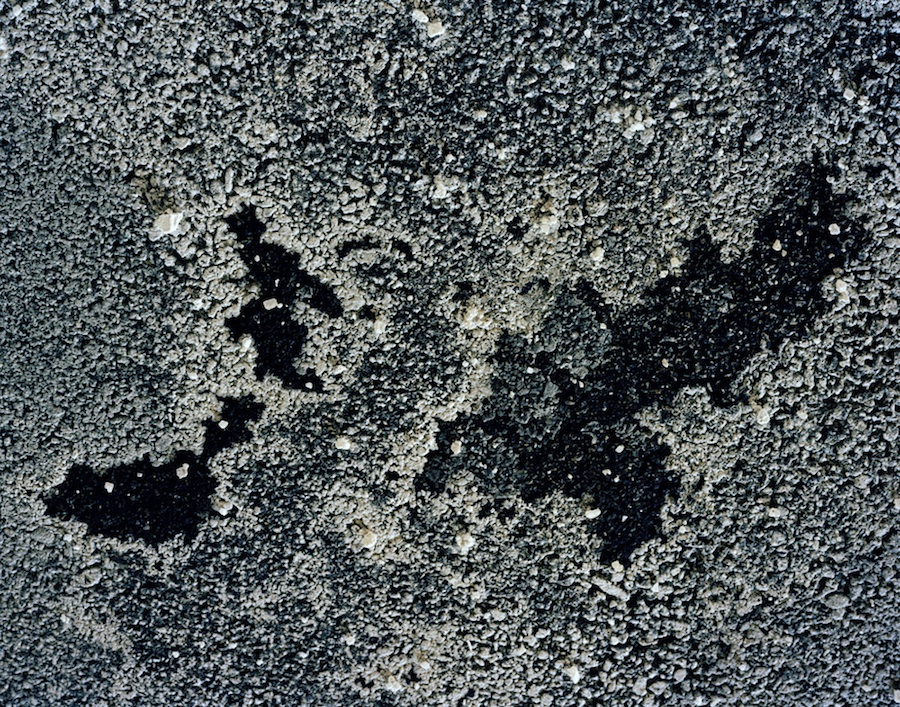
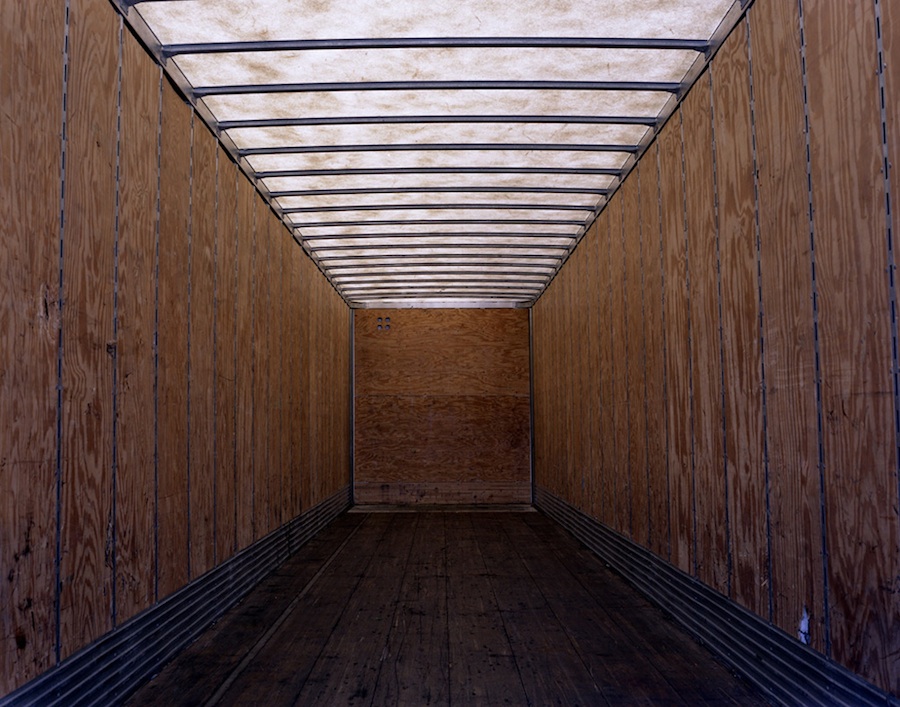
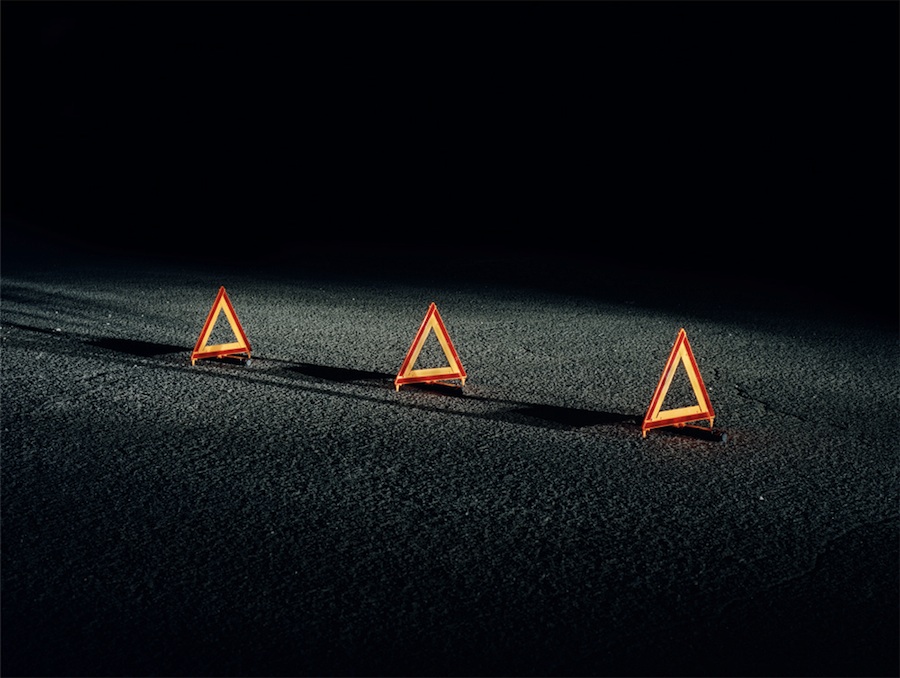
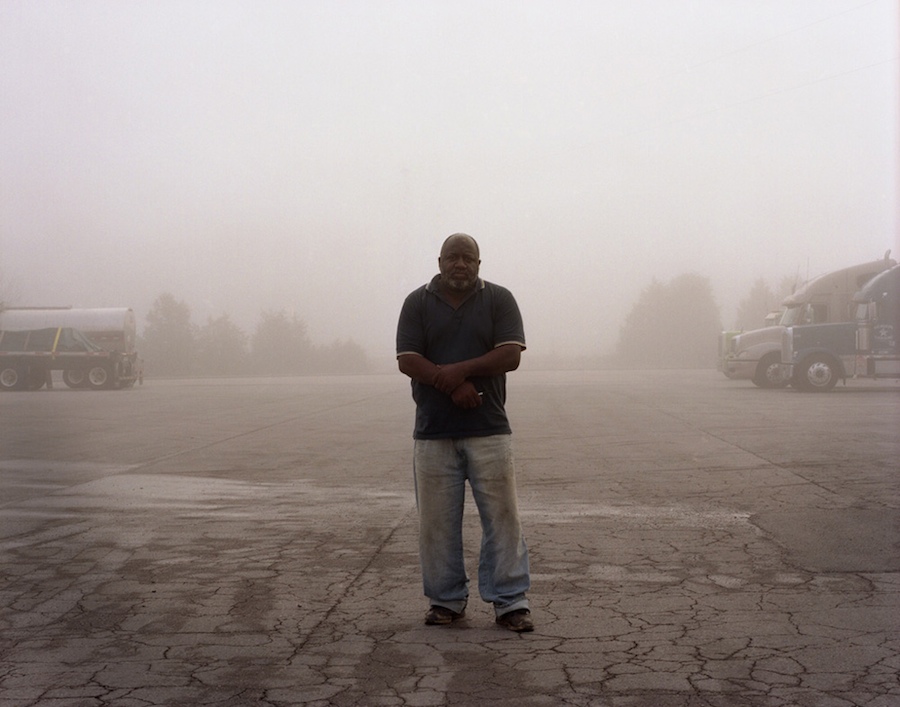
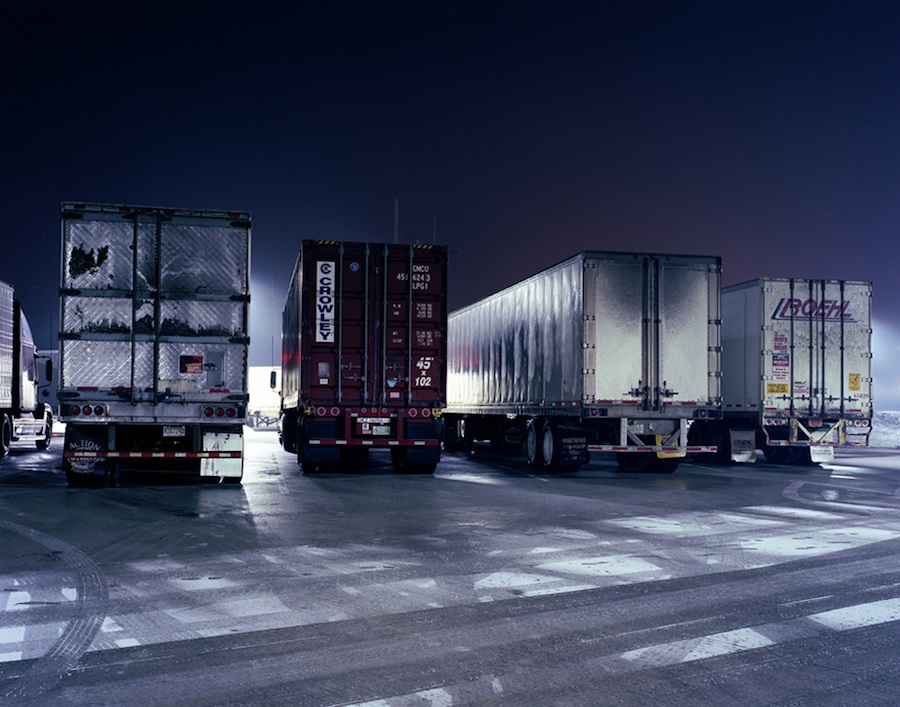
Interview continued
We witnessed firsthand the effects of our current economy, driving through states ubiquitously part of the “Rust Belt,” such as Michigan, Ohio, Pennsylvania, Indiana, parts of Wisconsin, Illinois, and New York. Barren car manufacturing parking lots complemented the open highways to which they were adjacent. We numerously sat for days waiting for loads in Ohio, pleading with our dispatcher to find us loads heading south as there were more loads moving down there.
As an artist, is it not enough to document what you see? What made you decide that you had to experience it first-hand for such a long time?
Trucking culture is one full of many misconceptions, and we set out to make a body of work that would illuminate truckers as the modern day heroes of our economy. Our intrigue stemmed from wanting to know who really is the backbone of our economy and what sort of stamina it takes to be the actual driving force behind our consuming culture.
In 2007, we spent a summer driving with James’s father, an owner-operating truck driver from South Carolina. We spent that time photographing him and his friends, hoping to understand their way of life and love for the open road. What we learned is we could never understand what they endured, so we decided to become the subjects ourselves. At the height of one of the worst financial crises in American history, we went to truck-driving school and got our Commercial Driver’s License.
What were the photo shoots like? Where did you develop your film during your travels?
It took us several months before we even picked up our cameras. Perhaps it was intimidation, just learning our responsibilities of this new foreign job, and/or trying to understand this culture, searching for our own point of view. When making portraits, it generally stemmed from random conversation. We rarely carried our cameras around and would strike up conversations with other drivers and take it from there. Timing was always an issue; since as a culture we are always on the move, having time to shoot was limited, especially while making portraits. After hauling our load for the day we would walk in and around the truck stop parking lot as our only form of exercise. It became meditative, being out of our truck, walking and coming across the mundane minutiae of our new everyday lives.
Most drivers are extremely autonomous and keep to themselves. You’re literally in and out of your truck, it’s a quiet and lonely occupation, and we chose to focus on that. We searched for open areas in and around truck stops and distribution centers to make our portraits, purposely with almost no descriptive background of who [the subjects] are, what they do, or even a sense of location to emphasize that we were constantly in a different place from day to day and wanted to reflect that anonymity. While making portraits we generally shot together (time permitting), dancing around our subjects with our cameras on tripods. It’s our time to get to know who they are, giving very little direction and allowing them the opportunity to react naturally to us.
Scale was very important for us. We played off the enormity of an 18-wheeler, our new mobile home, and how small everything seemed in comparison. We carefully chose how we made our images, the way we lit and how our images were framed. A lot of our images were photographed at night, the integral time of day we weren’t busy and were finished driving.
Processing was difficult as we were only afforded two to three days off a month. We processed in batches, months apart, and looked at negatives equally as sporadic.
Who did you encounter on the road and what were their reactions to your project?
Almost every human interaction we had was with other truck drivers or other individuals related to the industry. At first it was pure culture shock that faded away as we assimilated quickly. Any preconceived notions we had changed by our sharing the same load-carrying burden of making on-time deliveries. Rarely would you have a driver walk up to you and start a conversation. Usually faced with apprehension from other drivers, there was a very interesting dynamic being a young multi-ethnic couple in a male dominated culture. Our interest was followed by their intrigue of who we were and how we ended up there, making it easier to begin conversation that helped form relationships.
Were you ever in danger during your journey? What kind of truck deliveries were you making?
We were very wary of the dangers and horror stories we heard from other drivers regarding safety, robbery, etc. Luckily we never encountered such situations, and stayed clear of seedy truck stops that other drivers would tell one another about, over the CB, to avoid altogether. Initially, just driving was very difficult for us; getting used to the size of the truck and constantly knowing who and what was around you was a feat in itself, in addition to driving countless hours on end, up and down steep mountains, hoping your brakes won’t fail you.
We drove well over one hundred thousand miles and spent thousands of hours delivering loads. We’ve hauled many interesting loads, which varied from cat litter, adult toys, paper products, car engines, empty soda cans, light bulbs, J. Crew clothes, flat-screen TVs, windows, copper, and almost anything else you can imagine.
We once carried a load of weed killer from Monsanto in Iowa in which we had to wear protective eyewear and a hard hat just to enter the facility and take a test regarding their safety procedures. We were loaded with Sony products and were required to inform dispatch each time we stopped, where we fueled, and where we parked for the night. After picking up high-value loads such as those, you cannot stop for 200 miles to ensure safety of the product in case of theft or robbery. We were in awe of how often we were at a Walmart DC (distribution center), and how much product they moved. We once did a load for F.E.M.A., carrying bottled water as part of their relief effort when Hurricane Ike hit. This time they were more than prepared, having received so much criticism after Katrina. There were acres and acres of parking lots at Reliant Stadium in Houston full of 18-wheelers, each carrying either bottled water, medical supplies, cots, ice or MREs (meals ready to eat).
Your photographs vary from portraits, to landscapes, to abstract shots of textures. What made you choose to vary your style?
Instead of entertaining stereotypical notions about truck driving, we wanted this to be an intimate and personal meditation of an industry, and way of life, that most people know very little about. We became the job; performing the day-to-day, we became less and less interested in the façade. We were interested to see what held this culture together, and we pointed our cameras to that—the components that comprise the whole, a semblance to the world we entered, and we chose to highlight the isolation and vastness of the open road, and hours on end alone.
What are you working on now?
There are several ideas we are working on, approaching the subject matter in a similar manner. We’re currently in the research and development part before we actually begin making new work.
